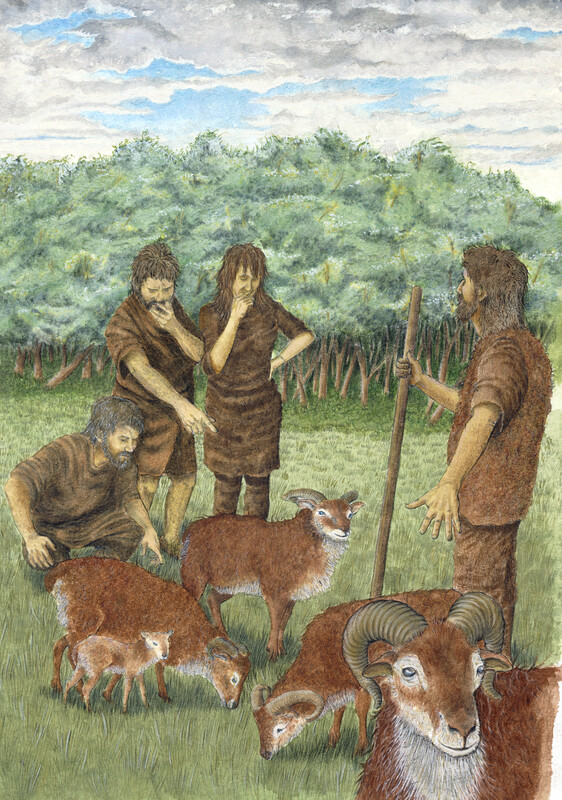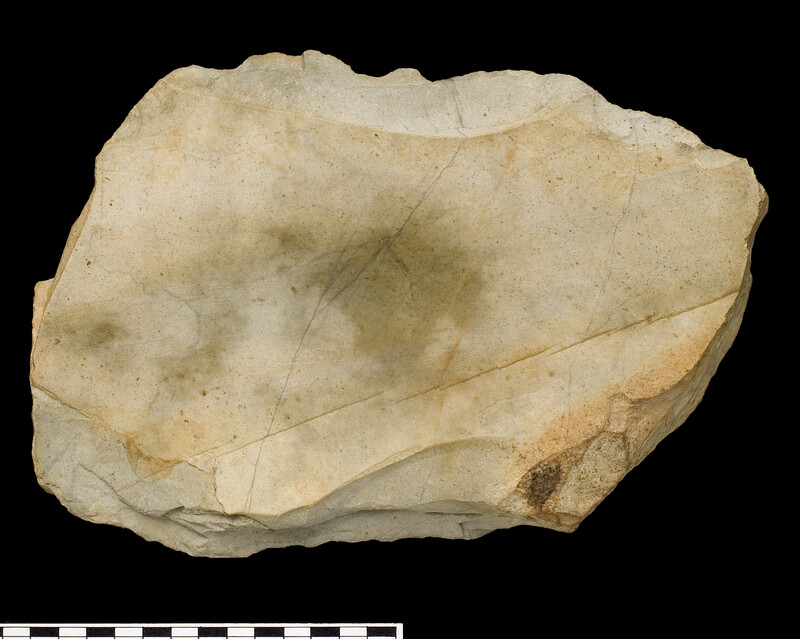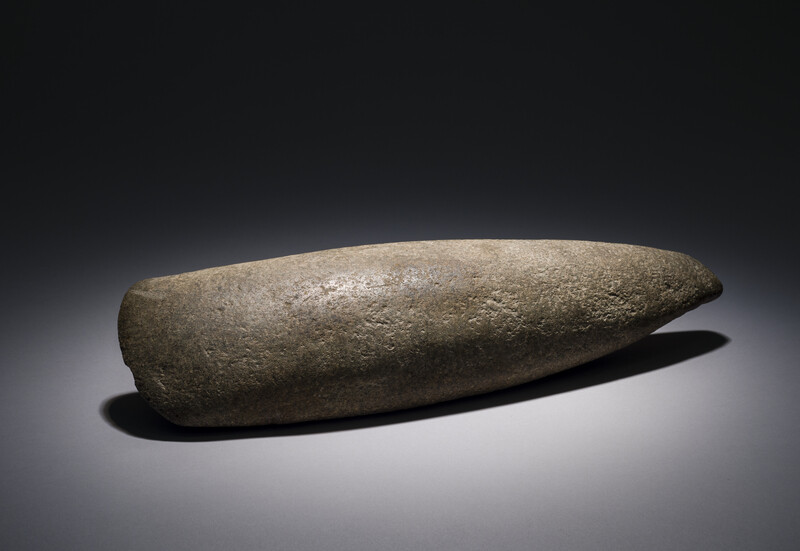Wales' First Farmers
, 26 Chwefror 2021
The launch of Lambcam 2021 seems like the perfect opportunity to think about the world of the very first farmers in Wales. This takes us back around 6000 years, to the beginning of the Neolithic period, a time when the hunting and gathering ways that had governed life for millennia were being challenged for the first time. Here we’ll take a quick look at three Early Neolithic innovations – farming, stone axes and pottery.
Farming fundamentally altered how people interacted with their environment. The wild woodlands that covered most of Britain started to be cleared using axes and fire creating areas suitable for animals and new cereal crops. Seasonal rhythms that had previously encouraged movement around the landscape became tied to the demands of cultivating crops and raising animals for milk, meat, skins and hair.
Today sheep are a familiar sight grazing on the Welsh hills but before 4000BCE people living in Britain would have been more used to aurochs (wild cattle measuring 1.8m at the shoulder), red deer, wild boar and wolves than exotic creatures like the domestic sheep! That said, a Neolithic sheep might challenge our modern expectations of what it is to be a sheep! They were much smaller with shorter, brown wiry hair rather than having the fluffy white wool we’re more familiar with – something like the modern Soay sheep found in the Outer Hebrides of Scotland.
Polished stone axes were another Neolithic innovation! The Public History and Archaeology department holds over 1,200 ‘roughouts’ and finished axes that have been found across Wales.
Many stone axes come from specific rock outcrops that were returned to over many years. In these remote places, stone was quarried and roughly shaped before being taken elsewhere to be finished and polished into fine axes. Sometimes axes are found considerable distances from their original outcrops – this helps archaeologists to understand the ways different groups of Neolithic people might have been connected.
Making and finishing a stone axe was a time-consuming business - it took hours of polishing with sand and water to create the smooth, polished surface.
Some axes would have been practical tools, used for felling trees, shaping wood or even as weapons. Others are incredibly beautiful and finely made. These may have been used to show prestige, status and connection to special places or groups of people.
Most of us have a favorite tea mug, breakfast bowl or plant pot so it’s hard to imagine a time when pottery did not exist. For the first farmers, pottery was the latest technology! Wet clay was shaped and changed into hard ceramic in a bonfire – this might have seemed magical at first, but it quickly caught on and pottery use spread across Wales. The first pots were simple bowls with rounded bases that were good for resting on the ground. They could be used for cooking, serving and storing food or to hold liquids such as soups and stews.







